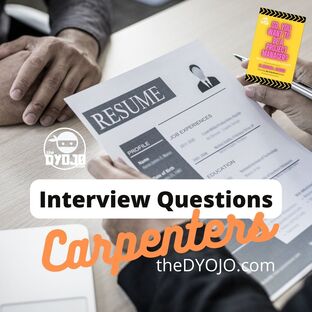 When we interview carpenters, we ask them to rate themselves on the skills and tasks that we will have them perform. For example, we would ask a candidate to rate themselves in experience and comfort with some of the following:
We have found that structuring our interview in this manner keeps us consistent in the process and facilitates a conversation with the candidate to get an idea of what scenarios they have been in and which capabilities fall within their areas of greatest competency. Most professionals have strengths and weaknesses, so we want to discuss those so we know where this person can immediately step in to help our team and what skills we can help them to develop. Help Your Team Members Grow Their SkillsetsGrowth is a two-way street, we can help them grow by pairing them with team members who can expand their skillsets and our team will grow by having them bolster our workforce. With as much emphasis as business persons place on recruitment and hiring, it is important for intentional restorers to understand the value of employee development and retention of talent.
0 Comments
Jon Isaacson was a guest on the Restoration Rundown Podcast which is produced by the team at Ironclad Restoration Marketing. Host Ben Ricciardi drew out:
Ben recently released the updated version of his book, The No BS Guide To Internet Marketing For Restoration Contractors. Check out his book and podcast for quality tips on improving your marketing efforts and being educated when seeking outside assistance with this mission. In various formats we have heard contractors discussing the idea of self regulating. The terminology may change, where a positive expression might be something like, "We need to raise the bar in property restoration." Or negative phrases such as, "It's disgraceful what we see now-days, something needs to change," are spread throughout industry social media pages. So, what does it look like for members of the property restoration industry to hold each other accountable to established standards of care? Understanding Industry StandardsSCENARIO: Suppose there is a situation where Manager X of ABC Construction observes Employee D of XYZ Construction doing something that they perceive to be out of line with industry standards. Let's define a few things first so that we are using the same language when we discuss standards of care?
Standard practices are the lowest level of any form of standards of care. This is similar to saying, "Everyone is doing it this way, so it must be right." This is not a high standard, it is not based upon anything other than what is perceived as common, and is not typically legally binding. The reasonableness standard may apply if someone were in trouble for their actions, i.e. were the decisions made by an individual legitimate and in line with what other professionals would do in a similar circumstance; this is highly subjective. Standards of care are typically consensus based, meaning the are the guidelines that members of a particular industry can agree to. They are also voluntary in that they may outline the baseline by which activities should The e conducted, but they may not present an immediate civil or judicial consequence if the standards are violated. Certifications within an industry are usually based upon competency in the accepted standards of care. Regulatory standards have a legal precedence and violation of these level of standards can result in financial penalties or jail time. Regulations are not voluntary and professionals are required to understand and operate within the boundaries of the compliance guidelines. Examples of Constructive Conflict Among Industry PeersSo, Manager X may need to ask themselves whether Employee D violated standard practices, standards of care, or regulatory standards before they decide to take further action. In either of these scenarios, I think we would all agree that Manager X should do their due diligence to confirm that what they thought happened actually occurred. What would that look like? In an industry where we treat each other as professionals, a constructive means of initiating a conversation might look something like this: Manager X knows that Manager T works at XYZ Construction. They have interacted with each other at various local functions and Manager T seems like a reasonable person. Manager X decides to call Manager T. In doing so, Manager X identifies themselves and states that they are having a hard time finding the right words but know that if someone had a concern about one of their employees they would appreciate the professional courtesy of being able to address the issue internally. Manager X states that they were at a particular job site and believe they observed Employee D doing the following (fill in the blank). It's quite possible that Manager X didn't see it right or have the full story, but it didn't sit right and they thought Manager T would want to know so that they could investigate themselves. If you are still reading, you probably think this sounds like a fairly tale. I can tell you that in a recent meeting of local contractors in Washington State, two vendors shared that this exact thing happened. Manager X observed Employee D pulling up to a jobsite falling out of their work vehicle. You might think that Manager X should have confronted Employee D on the spot. Manager X called Manager T and shared what they observed, knowing that what they had heard about XYZ Construction, this would not be in line with their internal standards. Manager T wasn't excited to receive the call, but took in the information as an opportunity to address the issue internally with Employee D and get ahead of it before it became a habit or perception of their organization. Both managers remember the call vividly and have since been able to refer each other work as their territories don't typically intersect. What could have been a negative experience turned into a positive exchange and a reflection of how difficult conversations can have positive outcomes. Approaches To Conflict With Industry PeersWhat other options are there when approaching a perceived wrong by a peer in the industry? The See No Evil Approach. Manager X could have pretended that they didn't see what they did and went their way without saying anything. They could have said, "That's not my problem." Yet, we all know, how the consumer perceives your competitors can impact how they perceive you. It is important as an industry that we are able to have some earnest conversations with poor performers from time to time. The Guilty Until Proven Innocent Approach. Manager X could have assumed that this behavior is a reflection of how Manager T and the whole team at XYZ Construction conducts their business. They could bad mouth them to consumers and industry peers and possibly even make a rant about what they observed on social media. Unfortunately, this can be as harmful as the prior approach, as one negative action is not made better by committing another one. The perception of the industry is not helped by contractors speaking poorly of their peers. The Innocent Until Proven Guilty Approach. How many times have your team members done something that was contrary to your training? How many times have you had a bad day and did something you regretted? What if Manager X was driving by the jobsite and did not see that 2 minutes later Employee D picked up their trash or that it was spilling out because their vehicle will full of equipment or debris (maybe the trash was jobsite waste)? Would you want the benefit of the doubt if a peer or a consumer saw something that they perceived to be negative? Our local group of restoration contractors and insurance claim professionals agreed that many of us is owners and managers do our best to train and hold our people accountable, but there are times when people do the wrong things. Yet, if this type of feedback is going to be beneficial, both sides of the conversation have to act in a mature and professional manner.
How a project starts is critical to set it on the right path to producing a positive customer experience and a profitable conclusion. A contract forms the legal agreement between a willing buyer (the customer) and a willing seller (the contractor). The contract is built upon the foundation laid from a clearly defined agreed-upon scope of work. What is and, as importantly, what is not included in that scope of work is outlined in the contractor’s estimate. Let’s discuss three guiding principles for better project outcomes. Element 1 - The Claims StandardThe Claims Standard is a guiding principle for all members of your team, and it crystallizes the responsibilities of all parties in the insurance claims relationship. Restoring the property to resemble pre-loss conditions, with materials of like kind and quality; no more and no less. Your initial site inspection identifies the affected areas related to the source and extent of the damages.
If everyone on your team understands and continues to frame the project in accordance with The Standard, all parties will have a clearer understanding of the parameters for success. I believe that when you properly implement this simple narrative into your process, from the outset, you can help steer the project lifecycle more consistently to a successful outcome (habit). Setting the expectations at this point in the project sets the team up to execute realistic expectations during production. Element 2- A Simple Estimating FormulaEstimating is the process of establishing the agreed-upon scope and cost for a given project. As contractors, we utilize a simple estimating formula to guide our process: Thorough Data Capture (TDC) + Accurate Data Input (ADI) = A Defensible Estimate (ADE) If you are struggling to produce consistently positive project outcomes, you should review whether your data inputs (estimate) are accurate as well as whether your data capture (documentation) is thorough. You must take accountability for this truth: The quality of the data inputs (composed estimate) is in direct correlation to the quality of the data captured. Everyone on the team should understand the importance of gathering and sharing quality documentation from the worksite. To tie these two elements together, the estimator will do everyone a favor by making the previously mentioned Standard clear at the outset of every claim. Your introduction could be something to the effect of, “My job is to perform thorough data capture of the site conditions so that I can accurately data input to generate an estimate for an agreed-upon scope (most likely through Xactimate) to restore your property to resemble pre-loss conditions.” Many customers choose to upgrade materials or use the damage scenario as a time to finally make those remodeling changes that they have been contemplating for months. Before a restoration contractor can bid the changes to the client, everyone needs to be clear on what is part of the insurance scope so the proper charges are going to the correct parties. Element 3 - The Restoration TriangleThroughout his career, Pete Consigli, The Global Restoration Watchdog, trained restorers to value the Restoration Triangle. Each party brings something unique to the table that should be heard and referenced as the agreed-upon scope is established:
Pete reminds stakeholders, “If one of these parties is left out of the process of determining and agreeing on the extent of damage, scope of repair, cost of restoration to a pre-loss condition, timelines, and criteria for satisfactory completion, then there will be problems.” A claim should not follow the narrative of a T.V. drama or a strategy for Survivor, whereby two members of the triangle team up to push their narrative through. For example, the contractor and client should not be in cahoots to figure out a way to “maximize the claim” without justification. This is fraud. Neither should the contractor and the carrier be working together to dwindle the scope. This is short-changing (and likely grounds for bad faith). Developing Your Estimating ProcessBetter project outcomes start with better project initiation. As an owner or manager, if you want accountability within your systems, you need to ensure your processes are clear and consisstenlty followed. As an estimator, you need to acknowledge your role in setting up your team for success. As a team, everyone has to work together if the process is going to improve. We know there are two primary goals,1) produce a happy customer, hopefully resulting in repeat and referral business (the best kind), and 2) a profitable project so that we can invest in people and growth. My soon-to-be-released fourth book, How Not To Such At Estimating, will also be a course delivered through Restoration Technical Institutes' learning platform. The content is designed to help restoration professionals develop Habits for Better Project Outcomes. I will share at least 3 more elements to add to your estimating toolbag. If you are interested in peer-reviewing a chapter or would like to be considered to win one of 12 FREE copies for aspiring intentional estimators, please contact The DYOJO through the book's landing page. The DYOJO Podcast The Power & Practice of Questions Season 3, Episode 82 Contractors who specialize in navigating insurance claims, know that the process can be contentious. In this episode, we discuss mindsets and habits that can assist you in achieving better project outcomes.
Business is a negotiation. If you take the carrier out of the equation, you are often negotiating with your clients. Part of a successful negotiation is clearly defining the scope and expectations of the project so that you can accurately bid the cost of materials and labor. If the carrier is paying for the work, they have the right to ask whether the scope has been accurately presented and thoroughly supported. The second meaning for negotiating is to, “Find a way over or through (an obstacle or difficult path).” You can view the adjuster as your adversary, but assuming so from the get-go only gives them one option - to be adversarial. Or you can proceed with the mindset to attempt to understand their position, in light of The Claims Standard, and find a means to reach a mutually agreeable outcome. Our primary guest is Steven Patrick of Level the Playing Field. He shares several insights that help contractors develop a framework for working through the claims process. These concepts, also are applicable to instances of resistance between contractors and customer.
Our discussion includes shout-outs and/or appearances by these guests:
THANK YOU TO OUR SPONSORS:
THURSDAYS ARE FOR The DYOJO Podcast - INFOtainment to help you shorten your DANG learning curve. New episodes of The DYOJO Podcast are released on Thursdays via video through YouTube and/or audio is distributed through platforms such as Apple, Spotify, Google, etc. READ MORE in The DYOJO Blog Additional Resources from The DYOJO:
|
Words
The DYOJO - helping contractors shorten Archives
April 2024
Categories
All
EstimatingMarketingInsurance ClaimsLeadership |
|
| |||||||
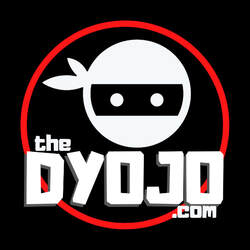
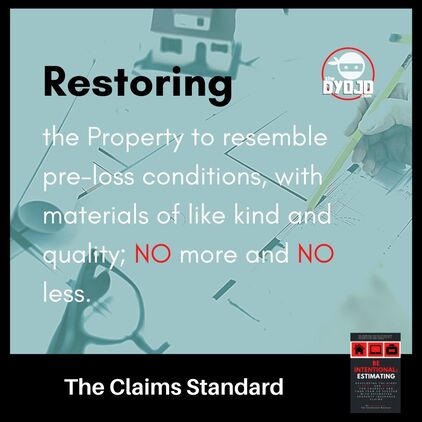
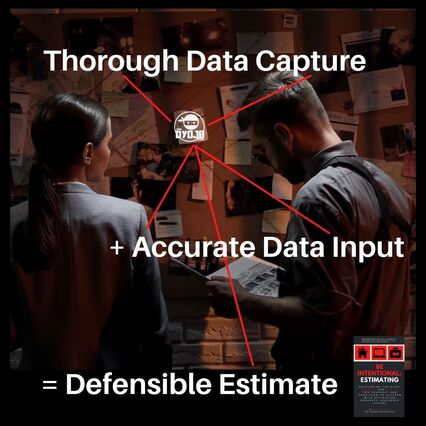
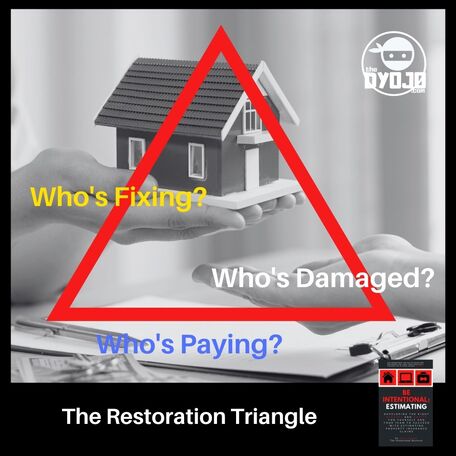
 RSS Feed
RSS Feed
